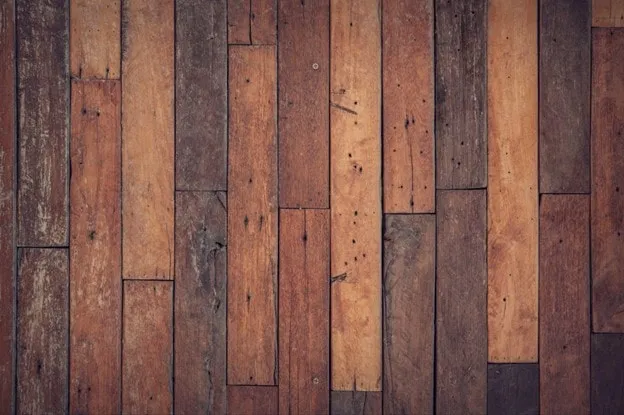There can be your advertisement
300x150
Essential Principles of Floor Sanding
Floor sanding is one of the best ways to keep beautiful wooden floors and make their care easier – meaning less dust and, consequently, fewer allergies for users.
Earlier, sanding meant complete removal of the wood down to bare timber; today, many floors can be revitalized using screening – an alternative method that is faster, cheaper and much less messy than traditional sanding techniques.

Choosing the Right Sandpaper
When sanding wood, it's important to choose appropriate sandpaper for a quality result.
Each grit size has its own advantages and usage specifics. The choice depends on the type of wood and the finish you plan to apply; generally, it's recommended to start with coarse-grit paper and then move to medium and fine grits for optimal results.
Selecting the correct sandpaper is one of the key points in floor restoration, so it's worth taking your time to make a proper selection. It’s best to test different samples before starting work; also consider the size and compatibility of your sanding machine when choosing grit. You can visit this site for additional information.
Before beginning sanding, prepare your home. Remove all furniture from the room and secure any movable items to protect them from accidental sanding.
To properly prepare the sanded surface for a new finish, fill all depressions and holes with wood filler before sanding with medium grit. Then, use handheld sanders equipped with 40- or 60-grit paper to smooth all edges and corners up to window sills. In narrow areas, use a spatula to remove old coating. You can also rent specialized sanders with flat heads designed specifically for access into tight spaces.
Proper Equipment
Before starting floor sanding, ensure you have the necessary equipment. A good dust collector is essential to prevent risks associated with inhaling wood dust, and protective masks and goggles should be used when operating machinery. It's also recommended to have a helper who can assist with lifting and moving equipment if needed.
The main part of the work involves using a large orbital sander; handheld sanders or edge sanders may be useful for narrow sections or room corners.
Choosing a sander appropriate to the size and type of wood being sanded ensures an even finish; additionally, the grit choice depends on the kind and age of wood being sanded. You can purchase various types of sanding equipment at local stores.
It's vital to ensure that floors are free of debris and other abrasive materials before painting with a new color or staining. Thoroughly removing carpets, carpet coverings and nail holes before beginning sanding will give you a clean and neat finish.
It's also recommended to check the moisture level before working on floors. High humidity levels can increase the risk of floor warping; therefore, it's important to have a moisture meter on hand – this tool will show whether the wooden floor is saturated with water and cannot absorb more paint or finish. You can click on this link: https://www.youtube.com/watch?v=2DUcteBbucM to learn more.

The Right Professional
Preparing wooden floors for restoration requires sanding. While some companies claim this step can be skipped entirely, hiring experienced professionals such as Brisbane floor sanders who have proven results and an impeccable reputation is key to project success. Be sure to ask them for samples of their work as proof.
An experienced sander understands how to safely operate equipment and follow instructions for every device they use. A dust collector will be used to minimize airborne particles, ensuring that the sander works cleanly without leaving marks; it also ensures equipment doesn't damage the surface.
When hiring a professional sander, verify their qualifications and experience. Ask how long they’ve been working and how many projects they have completed. Inquire whether they are licensed and insured to avoid potential liability in case of accidents.
Before starting sanding, fully clear the room and remove baseboards so that the edge sander has free access around walls. Also, use plastic sheeting over doorways and ventilation ducts to prevent dust from spreading throughout the house.
Hiring a professional who uses modern 'dustless' sanding systems can also be beneficial. This machine is equipped with a hose connected to an internal reservoir for continuous dust collection during sanding; this helps reduce airborne particles during restoration and significantly simplifies the cleanup process, reducing work time and dust in your home.
After sanding, it's important to choose the right finish for wooden floors. Choose between durable lacquer resins, polyurethane, classic oil and wax combinations or eco-friendly natural finishes – each can create beautiful and long-lasting floors. A proper choice will deliver a stunning and durable appearance!

Proper Finish
To make your wooden floor last as long as possible, it's extremely important to choose the right finish. It not only protects your investment and maintains the floor’s appearance for years but also offers many options for finishing wooden floors; selection depends on several factors such as floor wear.
Sandpaper should be of high quality to achieve optimal sanding results; follow the standard sequence when making cuts. Usually, start with coarse-grit paper and then progress to medium and fine grits for subsequent passes – but consult the sandpaper packaging for specific usage instructions.
Sanding wooden floors can be a messy job, but it's ultimately worth it. Sanding is significantly cheaper than replacing floors and adds an elegant accent to any home.
More articles:
 Elegant Atmosphere of a Country House in Madrid
Elegant Atmosphere of a Country House in Madrid Elegant Halloween Decoration to Captivate Guests
Elegant Halloween Decoration to Captivate Guests Elegant ivory — perfect for any room in your home
Elegant ivory — perfect for any room in your home Elegant Travertine Coffee Tables for Living Room
Elegant Travertine Coffee Tables for Living Room Elegant Round Hand-Knitted Carpets for Living Room
Elegant Round Hand-Knitted Carpets for Living Room Elegant Nostalgia: Ideas for Transforming a Bedroom in the Style of Old Wealth
Elegant Nostalgia: Ideas for Transforming a Bedroom in the Style of Old Wealth Elegant Shoe Cabinets: The Perfect Blend of Style and Functionality
Elegant Shoe Cabinets: The Perfect Blend of Style and Functionality Elements Residence by William Kaven Architecture in Mosier, Oregon
Elements Residence by William Kaven Architecture in Mosier, Oregon